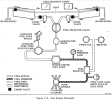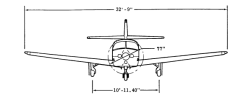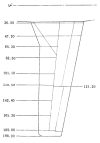I have flown in Cessnas that did not draw evenly from both tanks when the selector was set to BOTH.
There are multiple reasons for that:
If either fuel filler cap has a leak, the tank pressures will not be equal and so the flows will also not be equal.
When the tanks are full, the vent crossover line is submerged in the fuel, and since the vent inlet is on the left tank, its pressure will push fuel through the line from the left to the right until the level in the left tank is below the crossover.
Older 172s had a single outlet just aft of the center of the inboard wall. If the fuel sloshed around enough, air got into that line. The bubble got into the descending line behind the rear doorpost, and in cruise, with tanks on Both, that bubble rose at the same rate as the fuel descended, so it stayed put and acted as a dam that the fuel had to squeeze around. That tank would empty much slower than the other tank. It's the reason some airplanes had a placard that told you to switch to single-tank operation above 5000 feet. Altitude was a factor here. Drawing from one tank doubled the flow rate and carried the bubble through the system and into the carb where it left via the bowl vent. There was a service kit to modify the outlet lines at the tanks, with a spliced-in line to the vent crossover to send that bubble back to the tank. Later 172Ms and on had that line until the system was changed to two outlets and lines down both front and rear doorposts.
Most of these airplanes never get the plug in the fuel selector removed to drain accumulated debris. That's a 200-hour inspection item, on Cessna's inspection checklists. I have found plugs that have been in there for 40 years or more, and scary amounts of junk in that valve. That crap could cause uneven flow if there's enough of it.




